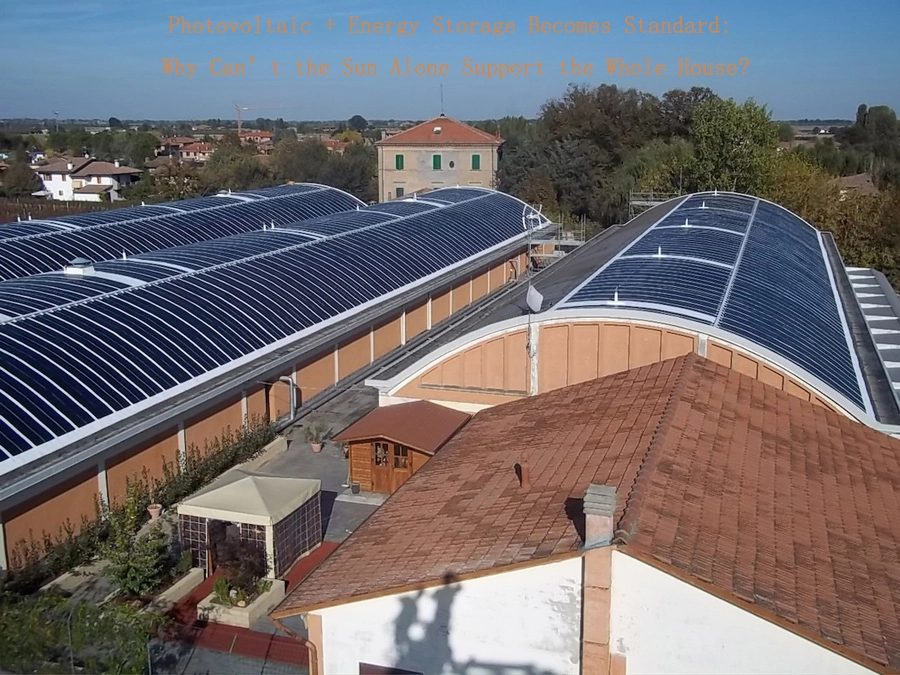Photovoltaic + Energy Storage Becomes Standard: Why Can’t the Sun Alone Support the Whole House?

Battery backup storage happens to be the most crucial state of life in the whole solar panel configuration.
The solar panels will only make electricity as long as there is sunlight. Once the sun dims behind dark clouds or the night sets in, a home without battery backup just buys power at exorbitant rates from the grid.
The disadvantages of going for stand-alone solar:
- At sunset, power generation falls immediately to nil.
- The electricity excess in the daytime goes to waste due to imposed power curbs or is retailed by the consumer at very low rates to the retail grid.
- Hence, what is saved in electricity bills during the day is silently spent by the consumer at night while the grid remains non-replaceable.
Things become different as this goes with batteries:
- Excess power generation during the day is stored in the battery and consumed gradually in the evening or during rainy days.
- Charge the electricity at low rates during non-peak hours and use them at high rates during peak hours to keep electricity bills thin.
- During powercuts, the fridge, lights, and router continue to function well, and life won't be interrupted.
Real-world Example: UK Savings
One of the residents installed a 5 kW inverter with a 10 kWh storage battery in his house. The power bills without any solar installation would be akin to £230 each month; after the battery, he only paid approximately £40. How did he do this?
More or less counting money:
Summer: Store the leftover 5 kWh energy for own use at the rate of 28 pence per kWh, a saving of around £255 in six months.
Winter: Store 5 kWh during cheap electricity in the battery (around £0.075) and use it during expensive electricity (28p), a net saving of £1.02 daily, another 187 in for six months.
Annual Total: About £442.
Choose a battery by looking for these four key points
Smart management: should calculate when to charge and discharge with regard to power generation and electricity price.
Battery chemistry: lithium iron phosphate (LiFePO₄) is preferred as it is very long life and quite safe.
Backup needs: first, define what appliances you want to back up during an outage, then choose a capacity.
Expansible: If you want enhancement in the future by installing more batteries, just plug in the module without having to replace the system.
Market & Policy Trends
At present, approximately one-third of solar homes on the United States roofs employ batteries. The cost of energy storage, previously out of reach, has also dropped to approximately $1,133 per kWh; with combined use of New South Wales, Australia's maximum subsidy and the UK's favoured rate for solar electricity, battery + solar has moved quickly from "try out" to "norm.".
Summary in one sentence
Both with the sun, you can generate electricity, and with batteries, you can save it. Together, the two not only make bills lean and power failures less frightening, but allow the house to gradually cut itself off from dependence on the big power grid. This is becoming an emerging norm for "future-proof" housing.
Want to get started?
- First think about our solar size guide and choose a bespoke photovoltaic solution
- Then see how off-grid solar + energy storage can provide all-weather power for mountain cabins, remote farms or emergency backup
Huiju Group Solution
We utilize modular lithium iron phosphate batteries and pair them with expandable photovoltaic systems, which can be expanded to meet the requirements of residential and commercial use. Day or night, grid-on or grid-off, it can provide reliable power supply. Visit here to find Huijue's solar + energy storage solution and let the sunlight on the roof really help you.
